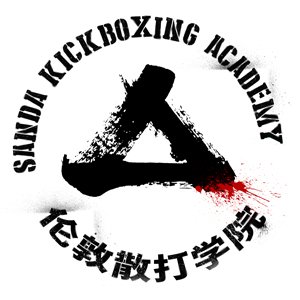INJURY PREVENTION AND RECOVERY FOR SANDA KICKBOXING
Sanda Kickboxing, a dynamic and intense martial art, requires a combination of strength, speed, agility, and power. To excel in this discipline, practitioners must not only focus on skill development but also prioritize injury prevention and effective recovery strategies. In this article, we'll explore key practices to keep Sanda Kickboxers in peak condition and minimise the risk of injuries.
WARM-UP AND COOL DOWN
At Sanda Kickboxing Academy we know that before engaging in any intense training or sparring session, it's crucial to dedicate sufficient time to warm-up exercises. In class you will be lead through dynamic stretches, light cardio, and joint mobilization prepare the body for the demands of Sanda Kickboxing. Similarly, a proper cool-down routine helps promote blood flow, reduce muscle soreness, and promotes flexibility, aiding in faster recovery.
CROSS-TRAINING FOR BALANCED CONDITIONING
Overemphasis on specific muscle groups can lead to imbalances and increase the risk of injuries. Integrating cross-training exercises into your routine, such as strength training, flexibility drills, and cardiovascular workouts, helps maintain overall physical fitness and reduces the strain on specific areas of the body. We would recommend seeking advice from your coach or a professional fitness coach before starting.
TECHNIQUE OVER INTENSITY
While intensity is a hallmark of Sanda Kickboxing, placing too much emphasis on power and speed without mastering proper technique can lead to injuries and over training. Focus on refining your techniques, footwork, and defensive manoeuvres. Quality technical training always trumps high intensity training, and mastering the fundamentals enhances both performance and injury resilience. That said, you must learn to increase intensity when you are preparing for competitions so that your body and mind can adapt to the intensity of a fight.
LISTEN TO YOUR BODY
Paying attention to your body's signals is paramount in injury prevention. Ignoring pain or pushing through fatigue can lead to overtraining and injuries. If you experience persistent discomfort or notice unusual sensations, take the time to rest and recover. Consult with a healthcare professional if needed.
PROPER PROTECTIVE GEAR
Investing in high-quality protective gear is a non-negotiable aspect of injury prevention in Sanda Kickboxing. Ensure that you have well-fitted gloves, shin guards, mouthguards, and headgear to minimize the impact on vulnerable areas during training and sparring.
NUTRITION AND HYDRATION
Proper nutrition and hydration play a crucial role in both injury prevention and recovery. Maintain a well-balanced diet rich in nutrients, including proteins, carbohydrates, and essential fats. Stay adequately hydrated to support your body's functions, enhance endurance, and facilitate efficient recovery. Proper nutrition and hydration will also give you enough energy for classes, reducing your physical and mental fatigue allowing you to maintain correct form and reducing your chances of injury.
REST AND RECOVERY STRATEGIES
Recovery is as vital as training itself. Incorporate rest days into your routine to allow your body to recover. Consider practices such as foam rolling, massage, and contrast baths to alleviate muscle soreness and improve flexibility. Quality sleep is also fundamental for overall well-being and recovery, so try to stay away from your phone before you go to sleep!
PROFESSIONAL GUIDANCE
Seek guidance from experienced Sanda Kickboxing trainers and, when necessary, consult with healthcare professionals. Regular assessments can help identify potential issues early on, allowing for timely interventions and adjustments to your training regimen.
CONCLUSION
Sanda Kickboxing is a martial art that demands dedication, skill, and a commitment to injury prevention and recovery. By incorporating these practices into your training routine, you not only enhance your performance but also ensure a sustainable and enjoyable journey in Sanda Kickboxing. Remember, a resilient and well-conditioned body is your best asset in the pursuit of mastery in this high paced martial art.

